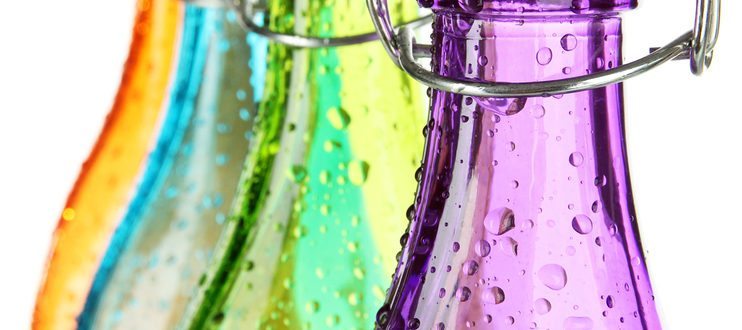A Brief History of Coloured Glass
Glass is all around us in the modern world, from the plane panes on our kitchen windows to the complex designs that adorn Christian churches. Glass can be toughened, reflective, decorative, frosted, coloured, clear and even bullet-proof (well, almost). It’s fair to say that we’ve got glass making down to a fine art and it’s no surprise. After all, the first evidence of man-made glass dates back all the way to 4000 BC.
At WA GlassKote, we’re experts in all things coloured glass, creating the most attractive, durable and high-value coloured glass products on offer in Perth. This ranges from coloured glass splashbacks to complex commercial applications.
Just like its clear cousin, coloured glass has also come a long way. In this article, we’re going to take a brief look at the storied history of coloured glass.
A Feature from Ancient Times
Just like many things in the modern world, we can thank the ancient Egyptians and Romans for manufacturing coloured glass objects. From murky mugs to brilliant blue vases, you can find many examples of this early work in museums around the world.
In the first century BC, when glass blowing became the most common method for creating glass, colour was less of a feature and more of a mistake. Impurities in the materials used often left products with an unintended tint, and this is something that can still be seen in glass today.
In fact, the most common type of transparent glass (also known as soda-lime glass) still produces a green tint. This glass is still used to create window panes, bottles, jars and more, although the green tint is usually invisible to the naked eye.
From Ancient Imperfection to Religious Art
One of the most famous examples of coloured glass comes in the form of stained glass windows, which can be seen in churches and public spaces around the world.
Some of the earliest examples of the stained-glass effect can be found in Christian churches in the 4th and 5th centuries, while stained glass windows emerged in Britain around the 7th century and Asia in the 8th century.
Telling a Story through Stained Glass Windows
In Islamic tradition, stained glass windows are generally geometric in nature, combining intricate shapes, floral designs and occasional text. However, coloured windows took on a more pictorial bent in Christian tradition, with this trend coming to prominence in the Middle Ages. Pictorial stained glass windows in churches date back to 10th century Germany, with more ornate and architecturally complex windows developing throughout this time.
Modern Applications for Coloured Glass
The history of coloured glass covers much more than religious windows and accidental imperfections. In the modern day, coloured glass is used for everything from accents to décor to building facades. Coloured glass shines as the brilliant splashback in a modern kitchen or the eye-catching design in a building’s foyer. From countertops to wall treatments and modern furniture, there isn’t much that coloured glass can’t be used for.
If you’re interested in coloured glass products in Perth, talk to WA GlassKote. We can manufacture, supply and install coloured glass products for you. For more information, visit us online or call 08 9303 9256 today.


